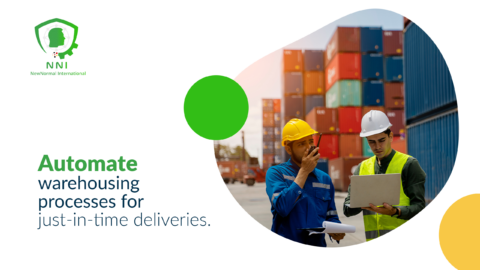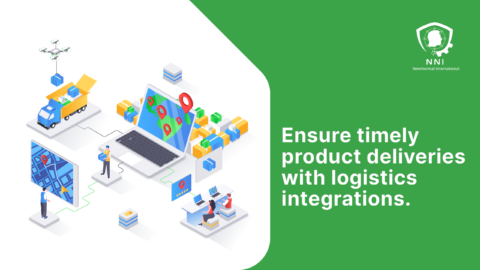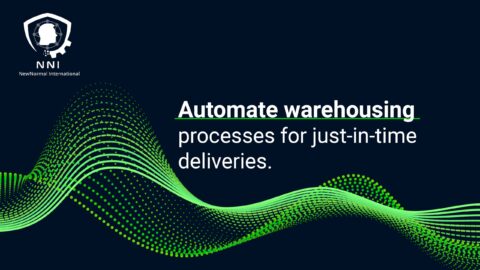Embracing Automation for Efficient and Timely Supply Chain Operations
In an era where speed and efficiency are key business drivers, the ability to Warehouse Automation processes for just-in-time deliveries has become essential for companies looking to optimize their supply chain. This article explores the impact of automation on warehousing and how it facilitates just-in-time delivery systems.
The Significance of Automation in Warehousing
In the era of hyper-competitiveness and ever-evolving customer expectations, traditional warehousing methods are no longer sufficient. Warehouse automation, powered by transformative technologies like robotics, artificial intelligence, and machine learning, has emerged as the driving force for a new era of operational excellence. This dynamic shift transcends mere efficiency gains, offering a multitude of benefits that empower businesses to thrive in a demanding landscape:
1. Enhanced Efficiency and Productivity: By automating routine tasks such as picking, packing, and sorting, warehouses can significantly improve operational efficiency and productivity. This allows businesses to process orders faster, fulfill deliveries promptly, and meet increasing customer demands without additional manpower.
2. Reduced Errors and Improved Accuracy: Human error is a natural but costly reality in manual warehousing operations. Automation minimizes these errors by introducing precision and consistency in every stage of the process. From picking and packing to inventory management and order fulfillment, automated systems ensure accuracy and minimize product damage or loss.
3. Lower Operational Costs: Automation unlocks significant cost savings through reduced labor requirements, improved space utilization, and minimized errors. By automating repetitive tasks, businesses can optimize workforce allocation, streamline operations, and eliminate the need for overtime or additional personnel, leading to tangible cost reductions.
4. Improved Delivery Times and Customer Satisfaction: Faster order processing and improved accuracy translate to faster delivery times and enhanced customer satisfaction. Automation empowers businesses to fulfill orders promptly and accurately, ensuring timely deliveries and exceeding customer expectations.
5. Enabling Just-in-Time Delivery Models: Automation facilitates the implementation of just-in-time (JIT) delivery models, where inventory is managed and delivered based on real-time demand. This reduces storage requirements, minimizes inventory holding costs, and optimizes working capital, leading to improved financial agility and responsiveness to market fluctuations.
6. Enhanced Scalability and Flexibility: Automated warehouses are inherently scalable, allowing businesses to adapt to changing demand and market requirements with ease. This flexibility is crucial in today’s dynamic environment, where businesses need to be agile and responsive to adapt to evolving customer needs and industry trends.
7. Improved Safety and Worker Well-Being: Automation alleviates workers from physically demanding tasks, reducing the risk of injuries and fatigue. This creates a safer and more ergonomic work environment, contributing to improved worker well-being and overall job satisfaction.
8. Data-Driven Decision-Making: Automation generates valuable data insights into inventory levels, operational performance, and customer demand patterns. This data empowers businesses to make informed decisions, optimize their operations, and continuously improve their overall efficiency and profitability.
Beyond these immediate benefits, warehouse automation fosters a culture of innovation and continuous improvement within organizations. By pushing the boundaries of technology and embracing automation, businesses can unlock unprecedented levels of efficiency, agility, and competitiveness, propelling them towards a future of sustainable success.
In conclusion, warehouse automation is not just a technological advancement; it’s a fundamental shift in logistics and supply chain management. By embracing automation, businesses can unlock a world of enhanced efficiency, reduced costs, improved accuracy, and unparalleled agility. Let automation be your guide on a journey towards a future where your warehouse operates as a seamless extension of your business, delivering value and exceeding expectations at every stage of the journey.
Change Management in Warehouse Automation
Effective change management is crucial when implementing warehouse automation. Transitioning to an automated system requires strategic planning, employee training, and a gradual shift from traditional manual processes to ensure a smooth and effective integration.
Leadership in Implementing Automated Warehousing
Successful implementation of warehouse automation relies heavily on strong leadership. Through executive coaching, leaders can gain insights into effectively managing the transition to automated systems, from selecting the right technology to overseeing its integration into existing processes.
Effective Communication in Automated Logistics
Effective communication is vital in automating warehousing operations. It ensures that all stakeholders are informed and aligned with the changes, from warehouse staff to suppliers and customers, facilitating a cohesive transition to just-in-time delivery systems.
Leveraging Generative AI in Warehousing
The use of generative artificial intelligence in warehouse automation can significantly enhance operational efficiency. AI can optimize inventory management, predict demand patterns, and streamline the sorting and packing processes, further supporting just-in-time delivery models.
Conclusion
In conclusion, the strategy to “Automate warehousing processes for just-in-time deliveries” represents a critical step towards achieving operational excellence in logistics. This approach not only ensures efficient and timely deliveries but also positions businesses to better meet customer demands in today’s fast-paced market.
#WarehouseAutomation, #JustInTime, #SupplyChainEfficiency, #LogisticsInnovation, #AIinLogistics











